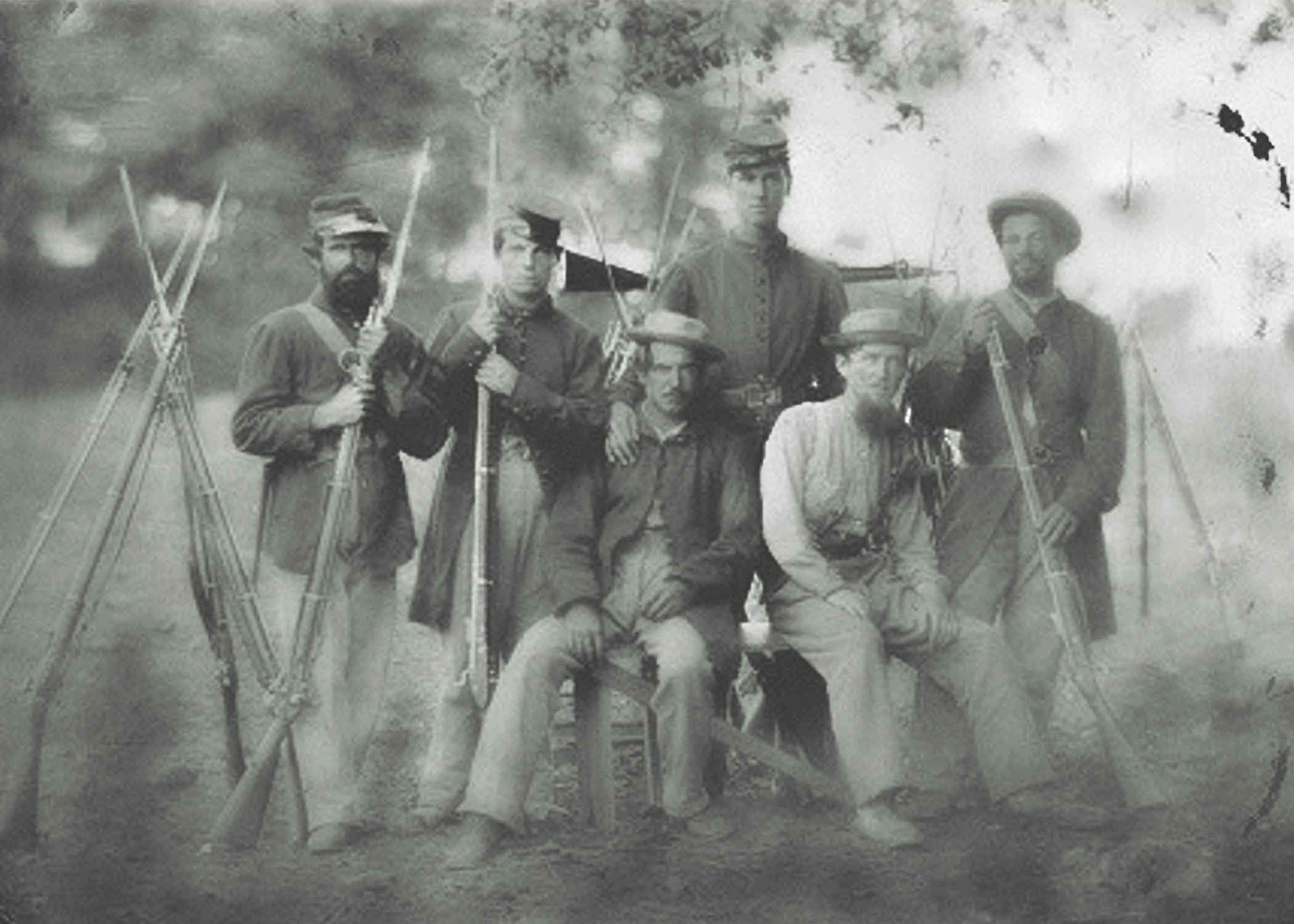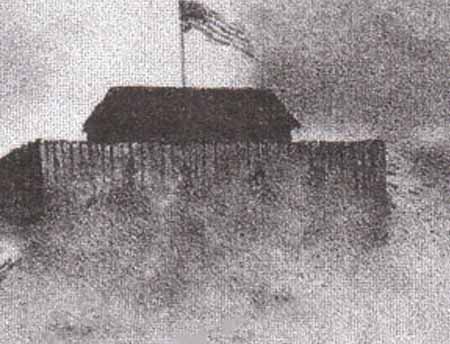Useppa Island Historical Society
Paleo through Spanish Fisheries
Seminole and Civil Wars
Roach and Collier Eras
Late 20th Century to Present
Paleo through Spanish Fisheries

Paleo
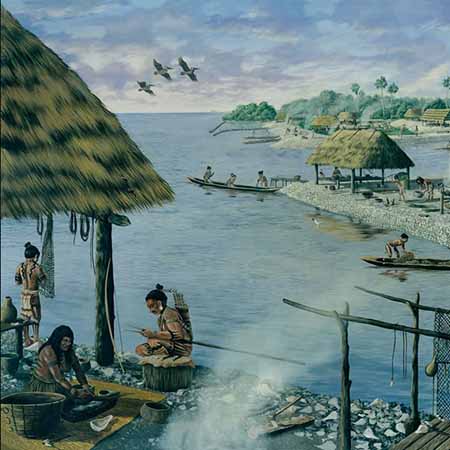
Calusa
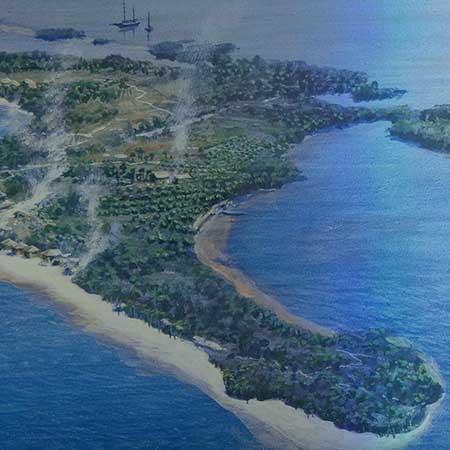
Cuban Rancheros

Jose Caldez
Paleo
The exhibits in the Barbara Sumwalt Museum begin with the Paleo Era of 10,000 years ago when Useppa was part of the mainland and the Gulf of Mexico was located 60 miles to our west. Its high elevation from a natural dune ridge and fresh water from a nearby spring created a natural stopping place for nomadic hunter-gathers. On display is a chert spear point dating from 8000-6500 B.C. which was found on Useppa sand after a heavy rain in 1987.
The Ice Age ended and the sea rose to the present-day levels and Useppa became an island. Rain became part of the weather pattern, seafood was abundant and people settled in this area. On exhibit are pieces of pottery, a deer bone pendant with intricate geometric designs and shell tools discovered on Useppa.
Calusa Period
When the Spanish came to Florida, the native population had grown to a reported 50,000 strong in southwest Florida. The Calusa people controlled all of south Florida from their capital located in this area. They are now recognized as one of the most sophisticated in North America and were noted for having developed a complex culture based on estuarine fisheries rather than agriculture. They used shells and bones for tools and constructed residences on shell mounds that rose over 30 feet high. They engineered a series of canals that maintained constant water levels and allowed them to travel across Florida to the other side of the state, and participated in trade that extended past Florida’s borders.
On display are reproductions of Calusa hunting and fishing tools, ceremonial masks, and the forensic reconstructions of a Useppa man and woman, found in two Useppa archeological digs and estimated to have died about 1,400 years ago. They are a visual reminder of the first people who lived on Useppa.
Cuban Rancheros
Under British rule (1761-1783) formerly restrictive Spanish trade policies were relaxed and the Cuban economy, including fishing, began to expand. Bernard Romans spent three years mapping southwest Florida. His reports included descriptions of the activity around Useppa, including the number of Cuban ships, crews and the amount of salted fish produced annually. The Spanish demand for dried fish led to many decades of peaceful interaction between the Creeks and the Cuban fishermen. The Creek people, later to be known as Seminoles, were sometimes called Spanish Indians.
Florida returned to Spanish rule in 1783 and Cuban fishermen continued to frequent the Gulf coast waters and establish fishing rancheros in Charlotte Harbor and Pine Island Sound.
José Caldez
José Caldez, a prominent ship master of this era, regularly transported Indians back and forth from Florida to Cuba and intermarriage was common between the Cubans and the Indians. Caldez visited Useppa for the first time with his uncle in 1776. He returned 20 years later and created a fishing ranchero recorded as Cayo tio Sespas, possibly named after his uncle.
In 1821 Spain ceded Florida to America. New laws created conflict and there was war with the Seminoles. A customs house was built on the north end of Useppa and the Caldez fishery was reported to have 15 dwellings, storehouses, and 50 men, children and Indian females. In January 1833 Caldez recorded the first known deed, selling Useppa for $373. A copy of the original document was found in the archives of the library in Key West, Florida and is on display in the museum. Caldez remained on Useppa until 1836 when the despised customs agent was murdered by Spanish Indians, and a small band of Seminoles attacked Useppa, burning the Custom House and destroying the Caldez fishery. José Caldez left Useppa after 49 years, having resided here longer than any landowner to date.
Seminole and Civil Wars
The First Seminole War started when Andrew Jackson ordered the burning of Seminole crops and villages in 1817. The Second Seminole War started in 1835 and was due to the Indian Removal Act, which confiscated Seminole land and ordered their removal to Oklahoma.
To stabilize the area, Fort Casey was opened on Useppa in January 1850. Named for Captain John Casey, it garrisoned 108 men. On display is his letter to the War Department describing Useppa. Casey made humane revisions to the Indian Removal Act.
A strong bond formed between Casey and Seminole War leader Billy Bowlegs. Casey became ill and died before the final war. His body was carried to New Orleans for burial on the same boat that carried Billy Bowlegs and his people to exile in Oklahoma.
The Civil War began three years later. Local men who believed in the Union sought refuge on Useppa. Serving as guides for Union ships in the local waters, they took part in the capture of 22 enemy supply ships. In 1864 they were named the 2nd Florida Cavalry and helped to capture Fort Myers. One of their adventures is on display in the diorama of the Rosalie.
Roach and Collier Eras:
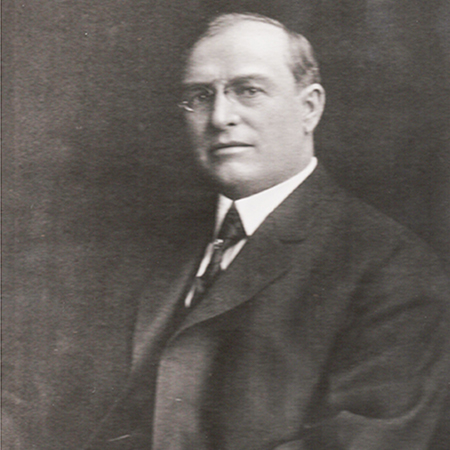
John Roach
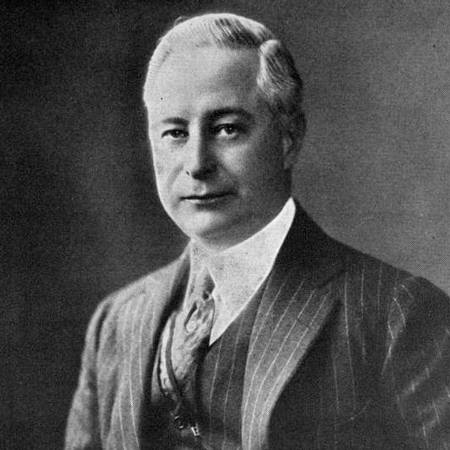
Barron Collier
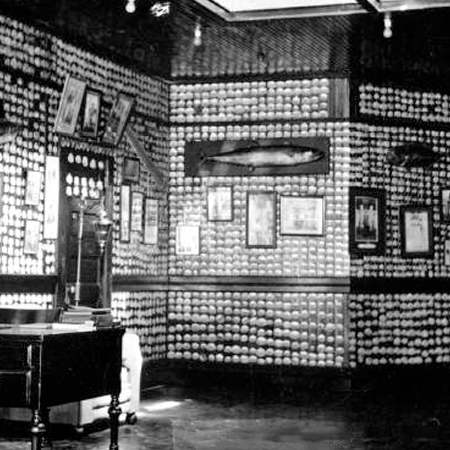
Izaak Walton Club
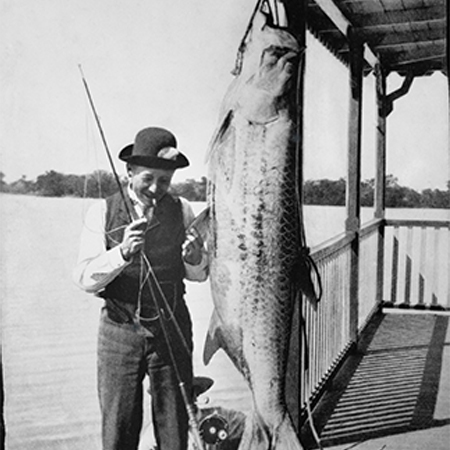
Edward vom Hofe
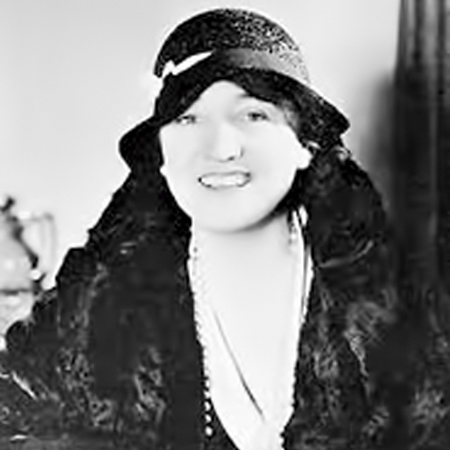
Mary Roberts Rinehart
John Roach
Useppa remained relatively uninhabited for many years until John Roach, a Chicago streetcar magnate, bought Useppa in March of 1894. He built a winter home and by 1900 had expanded it into the 20-room lodge to create the Useppa Inn, building another new columned home for his family. His home is now known as the Collier Inn. Rooms were rented at the Useppa Inn during late spring to guests who came in search of tarpon.
Useppa Island emerged as the world’s premier accommodation for those seeking a luxury base retreat while angling for the famous “Silver King.” Notables such as Teddy Roosevelt, Mae West, Zane Grey and Herbert Hoover are said to be among the many celebrities who flocked to Useppa Island to stay at the renamed “Tarpon Inn.”
Barron Collier
In 1911 Barron Collier bought Useppa Island. Having made a fortune in advertising on streetcars by the age of 26, he later invested $16,000,000 in Florida and was its largest single landowner. Useppa was his Florida home. He redesigned the Tarpon Inn, adding a third floor, and changed the name back to the Useppa Inn, built a nine-hole golf course and added sand beaches. By 1918 the island offered 71 guest rooms and became a popular destination for Florida visitors.
Barron Collier died in 1939 at the age of 66. At the time of his death he owned over 1,000,000 acres of Florida land and controlled an immense empire. The absence of his energetic presence and the state of world affairs led to the decision to close the island to visitors. The grand hotel, the Useppa Inn, fell into disrepair, suffered damage from a 1944 hurricane, and was demolished after the war.
Izaak Walton Club
The Izaak Walton Club, named for the 17th-century author of The Compleat Angler, was founded on Useppa at around 1908 and was one of the most prestigious fishing clubs in America and one of the first conservation groups in the United States. The Club initiated the practice of releasing all tarpons, except those to be weighed in for the award of the highly coveted button. A silver button was given for the first tarpon caught, a gold button for a 100 pound tarpon, and a gold and diamond button for a 150 pound tarpon.
One scale was taken from the tarpon before the fish was released. The scales were dried and labeled with the weight, place, date and name of the fisherman/woman and mounted onto the walls of the Club room.
Included in this display are silver trophy buttons, lures that belonged to the American author Zane Grey, an avid fisherman, who came to our area for tarpon, and a rare 1867 vom Hofe reel, which was made the same year he started his business.
Edward vom Hofe
Edward vom Hofe, an American reel maker, stayed on Useppa many times. It was his tarpon fishing experiences in southwest Florida that led him to design his star-drag reel. It had a clutch and brake system, which gave everyone the ability to catch large game fish. A photo taken on Useppa of vom Hofe with his record tarpon is on display in the museum. His invention help to create the beginning of modern sport fishing.
Mary Roberts Rinehart
America’s best selling mystery writer was Mary Roberts Rinehart, author of over 50 books, hundreds of short stories, articles, plays and travelogues, as well as a war correspondent and activist for the Woman’s Suffrage Movement and Native Americans. Friend to kings and presidents, she was introduced to Useppa by President Herbert Hoover. An avid fisherwoman and officer of the Izaak Walton Club, she and her family were frequent visitors to Useppa during the 20’s and 30’s, residing on the north end of the island in “Honeymoon Cottage.” In addition to her repute as a writer, Ms. Rinehart, a survivor of breast cancer, was a pioneer in leading the campaign from a formerly taboo subject to a prominent national concern.
Late 20th Century to Present:
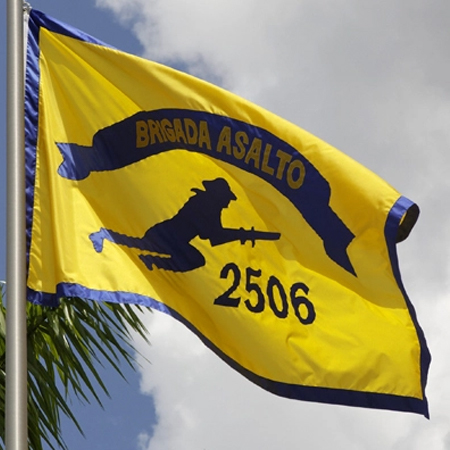
Bay of Pigs
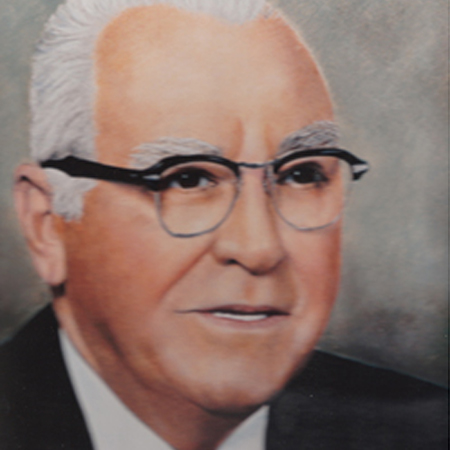
William Snow

Jimmy Turner
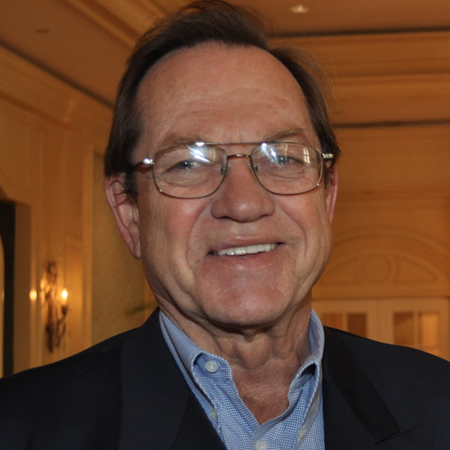
Gar Beckstead
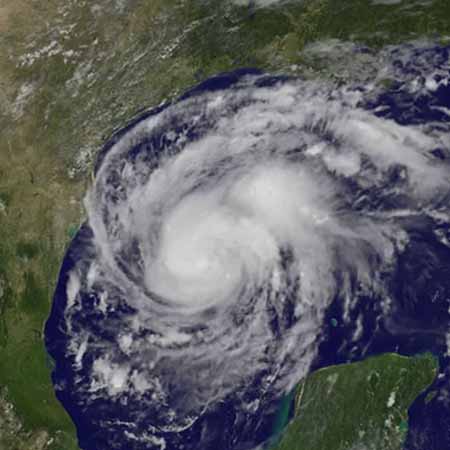
Hurricane Charley
Bay of Pigs
In March 1960 President Eisenhower ordered the Central Intelligence Agency to use their Special Activities to equip, train and lead Cuban exiles in an invasion of Cuba to overthrow the government of Fidel Castro. The plan was launched in April 1961, three months after John Kennedy became president of the United States.
This museum exhibit tells Useppa’s role in the Bay of Pigs and of the Cuban exiles counter-revolutionary force known as “Brigade 2506.” Volunteers from Miami were brought here at night. They had physical examinations at the Collier Inn, and then underwent intelligence, psychological, general attitude, and lie detector tests. The 28 military men who passed became the military leaders, The Cadre. They were sent to Panama for training. The 20 civilians who passed stayed on Useppa for nine months and were taught CIA codes and radio transmission. Later, they received guerilla warfare training. Their mission was to infiltrate Cuba before the invasion, then find and organize dissidents.
The Bay of Pigs Invasion ended after three days when the Cuban armed forces, trained and equipped by Eastern Bloc nations, defeated the exile combatants. Today veterans of Brigade 2506 periodically return to Useppa to honor the memory of this event and their fellow brigade members.
William Snow
William Snow, a successful businessman from Macon, Ga., bought the island in 1962 at a public auction for $400,000. He repaired the buildings, adding a sewage disposal system and built a 2000-foot airstrip at the south end of the island. He had a swimming pool built in Georgia by a friend to save money. It was cut in half, put on a flatbed, and brought to Florida. Snow then purchased a barge but it sank in the Intra coastal Waterway when it was halfway to Useppa. The Coast Guard fined Snow every day the barge obstructed water travel, making it one of the most expensive pools in Florida at that time. This same pool remains today. The island resort was not successful and Snow offered the island for sale after two years.
Jim Turner
In 1968 a Florida native and dairyman, Jim Turner, bought Useppa for $540,000. Useppa offered a place to dock his boat Big Toy, the world’s largest fiberglass sailboat. He added dockage and Useppa was open as a full-time “adults-only” resort, not allowing children under the age of 14 on the island. In 1970 the island closed again. The original sign posting this island policy of “no children under 14” that was mounted on a marker entering Useppa’s water channel is on display in the museum.
Garfield Beckstead
In 1973 the Mariner Group, developers of South Seas Plantation, bought Useppa. Garfield Beckstead was a Mariner investor and working overseas for an international consulting firm. When he saw the island for the first time, he resigned his job and purchased Useppa in 1976. He brought a reliable water system, electricity, and telephones to Useppa. The island was transformed into a private club and is now home to over 100 private homeowners. Useppa Island Club offers a full array of amenities to members, including a pool and deep dockage, maintenance and landscaping services for the residents, a ferry shuttle service to Pine Island and continues to offer lodging and meals at the Collier Inn. The golf course was not restored, but a regulation croquet court was created.
In 1997-1998 renovations were undertaken on the Inn to create guest rooms on the second and third floors. Renovations also included the extension of the roof line and upper porch to resemble the roof line of the original building, once the home of John Roach and later Barron Collier.
In 1989 Beckstead donated property facing the croquet court for an island historical museum. A cottage was donated by Mary Ann Krey and moved to the site by the Useppa Island Historical Society. Under the leadership of UIHS members and Barbara Sumwalt, the society raised funds to renovate the structure as a museum, which opened in April 1994.
Hurricane Charley
On Friday, August 13, 2004 the eye of Hurricane Charley, a category 4 storm, crossed over the island. Most of the homes were damaged. There were no injuries among the few people that stayed. The severely damaged Collier Inn was able to reopen exactly one year later. The video and panels in the museum tell the story not only of this storm, but of the strength and determination of the people to return Useppa to the beautiful island it is today.
Temporary Exhibits
Past Exhibits
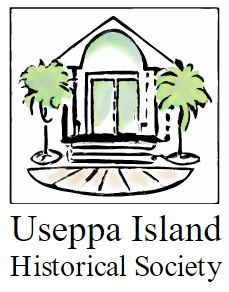
© 2020 Useppa Island Historical Society
Support
Exhibits
Join our Email List

